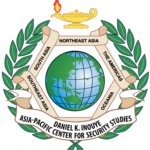By Frederic S. Goldstein1, Benjamin J. Ryan2, Deon K. Canyon3
Over the past few months of the COVID-19 pandemic, we have increasingly heard the phrase, “we need to learn to live with it.” Often this refers to accepting and dealing with something when a bad situation or adverse life event alters expected outcomes. In the case of the current pandemic, the end and return to normal was the expected outcome. However, humanity has been overwhelmed by repeated surges of cases, hospitalizations, and deaths associated with the Delta variant. Questions are now being asked about the fate of COVID-19. Is this the last surge we are likely to see? None of the experts know the answer, but with continuous reports of emerging mutations and new variants with perhaps greater transmissibility and infectiousness combined with low vaccination rates, policymakers and planners are coming to terms with the fact that they must consider additional surges, a rolling, long-term pandemic, or even endemic COVID-19.
The COVID-19 pandemic has repeatedly shown the world that pandemic exit strategies are often ill-considered and unstructured. Despite all their resources and scientific capacity, affluent nations remain vulnerable and exposed due to the emergence of mutations conferring higher transmissibility, and the inability to convince the entire population to take preventative measures. Nations that have locked down their borders for long periods have learned to live with the fact that they remain vulnerable to COVID-19 and need an exit strategy.
Policymakers and planners in some nations and communities are rapidly adjusting course with the aim of learning to live with COVID-19. This includes rethinking their policies as they either give up preventative practices, lockdown harder than ever, or take the middle path. Accepting vaccination is critical for success and at times this may be complemented by mask-wearing, social distancing, and limiting gathering sizes to ensure a smoother path to social and economic recovery. The mindset has changed from zero COVID-19, embracing infection or eliminating the risk of infection to focusing on the middle path of avoiding severe illness and death.
Focusing on the first word “Learn” can be instructive. Learn means gaining knowledge or understanding or skill by reflection, imitation, or experience. As Confucius said, the former is the easiest and the latter the most bitter. This is the key to our ability to successfully adjust to current and future conditions associated with the COVID-19 and future pandemics. We must begin by recognizing that learning is a continuous, iterative, ongoing process. This is the basis of scientific discovery and advancement, and an underlying reality that we all must understand and embrace. As COVID-19 mutations continue to emerge, so must humanity continually update its knowledge about the virus, its epidemiology, ways it can be targeted, and what we can be done to mitigate impacts on societies and nations. Learning to live with the virus is increasingly being seen as the only way forward and the new normal. Integrated options for achieving this are outlined in the following section.
- Virology – More resources are required to understand and track this virus. Countless mutations have been observed, however, we do not know the epidemiological impact of each of these mutations. When the Delta variant emerged, it had some mutations that had been characterized, but several new ones that had not been researched before. This information needs to be rapidly researched, shared and made available in a global public health database or something similar using existing infrastructure.
- Vaccines – All vaccines possess different levels of efficacy with breakthroughs and boosters being common to most. Research must continue to identify higher efficacy vaccines and to explore new mechanisms for generating physiological immunity. As the virus continues to evolve, vaccines developers play catch-up, as they do for influenza every year.
- Medicine – The medical community has learned a great deal about COVID-19 and while there is no treatment, fewer patients are dying due to improved care. While research is still required to improve medical support, we need more data on what this virus does to the human body. In addition to respiratory issues, are there circulatory system impacts? What are the multisystem components and how do they manifest? This will require more research and global cooperation by experts from around the world.
- Healthcare – Increased surge capacity and planning is required. Unvaccinated COVID-19 patients are consuming limited human and other resources required to treat other ailments. As a result, people are dying due to an inability to access standard care. New strategies and/or extra resourcing, such as insurance coding, for providing in-home care and telehealth are urgently required for all patients.
- Prevention – We need to better understand the myriad of non-pharmacological interventions, their individual and aggregate impact, and when, where, how, and why to use them. For example, social distancing, group size, indoor, outdoor, ventilation, cleaning, and face masks in certain situations such as mixed populations of vaccinated and unvaccinated.
- Population Health – Governments must focus on the factors that protect and promote health across all sectors of society. Prevention is the priority, which is an anticipatory action taken to prevent the occurrence of an event or to minimize its effect after it has occurred. However, prevention is not always achievable, so we need to understand the population-at-risk and how to reduce exposure to disease pathogens. This requires flexibility and rapid accurate communication. Perhaps now is the time for multi-disciplinary population-based management teams to inform decisions? Decision-makers must come to recognize that no one authority or organization possesses all the expertise or resources required to mitigate COVID-19 risks and allow all aspects of society to continue functioning.
- Education – We have information on this virus concerning treatments, medications, vaccines, non-pharmaceutical interventions, and a myriad other things people need to know and understand to make good decisions, but the method by which this information is used to educate the general population is deficient. The pandemic revealed a lack of basic knowledge in science, biology, and healthcare. Further, it exposed our inability to influence through education, certain populations to adopt preventative behaviors.
- Behavior – Creating behavioral change in individuals to improve population health remains the most significant challenge for the government. Understanding how to bring about systemic behavioral change is required by both the general population and healthcare providers. As the virus mutates and spreads through communities, we must be as rapid in our ability to change our approaches and influence others for the betterment of all.
- Flexibility – The ability to adapt is necessary to embrace the changes required to survive this pandemic. One community or school district may be doing well and then have a large outbreak, while another may be going from a surge to a lower number. Both require flexibility to change the community’s approach.
- Tradeoffs – Taking the middle path requires balancing the trade-offs of opening society versus locking it down. Between a fully opened society and a locked-down one. If anything has become clear over the past two years, politicians often have little awareness of the consequences of their decisions. It is not acceptable to have zero deaths and economic ruin, and we certainly do not want preventable death to keep the economy going. Lost in this conversation has been the huge healthcare costs associated with choosing the economy over safety. Is healthcare really what we want to spend our money on as an economic driver, and is it economically better to create more sickness, which impacts productivity? What too of the costs to healthcare personnel, to those suffering mental health issues, and to those experiencing long COVID-19 with a potential lifetime of health issues, loss of education, and social opportunities?
- Assistance – The International Monetary Fund said the world faces “a worsening two-track recovery, driven by dramatic differences in vaccine availability, infection rates, and the ability to provide policy support.” COVID-19 highlights an increasing divide between affluent and poor nations, and yet, it has also revealed how close we are all tied together in manifest pandemic destiny. It is high time that all nations turned their attention to adequately resourcing and resolving transnational security threats of this nature.
We have seen the socioeconomic impacts of extremes in decision making that drive national leaders to seek a realistic path that retains the flexibility to adjust as the situation changes. The possibility remains that humanity will encounter a variant that is more contagious, more virulent, and unresponsive to current vaccines. To cope with this possibility, nations and communities need well-resourced, well-structured, and well-integrated options for living with COVID-19.
As humanity continues its bitter experience with the pandemic, it is learning what does not work and what does work against this virus. “Learning to Live with It” does not mean complacency, which only serves to increase global inequities. The warning signs are clear and national leaders must ensure we move through this pandemic without creating additional, unnecessary, long-term generational damage to health systems and economies.
[1] President and Founder Accountable Health, LLC
[2] Clinical Associate Professor, Department of Environmental Science, Baylor University
[3] Daniel K. Inouye Asia-Pacific Center for Security Studies, Honolulu Hawaii
The views expressed in this article are the author’s alone, and do not necessarily reflect the official position of the DKI APCSS or the United States Government. September 2021
Published: September 21, 2021
Category: Perspectives
Volume: 22 - 2021





